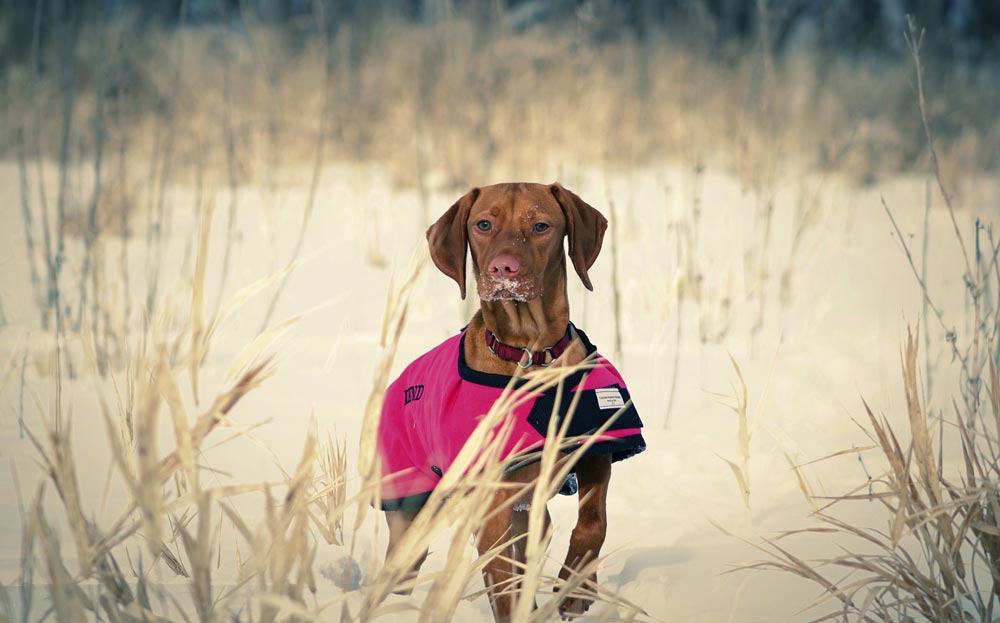The Always-Up-To Date Guide.
Dogs love to go for walks, but when the weather turns cold, it's important as an owner to take some extra precautions to make sure your dog stays safe and warm. In this article we're going to cover 6 key important tips to keep your dog safe during winter walks this winter season.
- How do winter walks differ from other seasons?
- How to keep your dog warm while walking in the cold winter weather
- Tips for bundling up your dog before going on a walk
- Safety precautions to take during winter walks with your dog
- Common dog injuries in the winter
- What to do if your dog becomes injured or lost during a winter walk
- Final thoughts on winter dog walks
How do winter walks differ from other seasons?
It might be obvious, but the key item to remember when taking your dog for a winter walk is that the cold weather can be dangerous for them. Unlike in the summer, when the heat can be potentially hazardous, in the winter it's crucial to keep your dog warm and bundled up.
How to keep your dog warm while walking in the cold winter weather?
The simple way to keep your dog warm while walking in the winter is to dress them appropriately for the weather. Clothing made for dogs, such as coats, boots, and sweaters are great options to keep your pup toasty and warm. Boots are especially important because clumped snow and ice sheets can injury the pads on your dogs paws. You can buy special dog booties that fit over their paws to keep them warm and protected from the cold ground and snow.
Tips for bundling up your dog before going on a walk
One of the best ways to protect your dog from the cold weather is to bundle them up before taking them for a walk. One essential item for bundling up your dog is a coat. There are many different types of coats available on the market. Here are 3 key items to consider when buying a coat for your dog.
- Make sure the dog jacket fits snugly on your dog and is not impacting their normal walking pattern.
- Choose a warm and protective material for the jacket and monitor for any signs of allergies to the fabric.
- Make sure the jacket design is simple and easy to put on your pup.
Boots are a necessity when bundling your dog for cold harsh winter walks. Quality boots will keep your dog's feet warm and protected from the cold ground and snow. Snow clumping on the paws can be an issue for many long and thick haired dogs. Dog boots completely solve this issue.
Another item to consider when bundling up your dog is a hat. Many dogs don't like hats, but if you can find one that fits well and doesn't cause discomfort, it can help keep their head and ears warm.
Safety precautions to take during winter walks with your dog
Always make sure you have a plan for your dog in case something goes wrong during a winter dog walk. Taking proper safety precautions is of the upmost importance. Below are 3 simple precautions you can take that increase both you and your pups safety during the winter months.
1. Always have a leash so you can keep your dog near when needed.
2. Keep a phone on your person so you can stay in contact with friends and family if needed.
3. Check your dogs pads for snow clumps every 30 minutes.
Common dog injuries in the winter
Dog owners should be aware of the most common dog injuries that can occur during the winter. Some of these injuries can be prevented by taking proper precautions, while others may require emergency veterinary care.
The most common injuries sustained by dogs during the winter are:
- Frostbite: This occurs when the dog's skin is exposed to cold temperatures for an extended period of time and can cause damage to the skin and tissues. Symptoms include skin discoloration, swelling, and pain.
- Hypothermia: This occurs when the dog's body temperature falls below normal and can lead to seizures, coma, and even death. Symptoms include shivering, lethargy, and shallow breathing.
- Paw pad injuries: These can occur when walking on snow or ice and can cause bleeding, infection, and even permanent damage to the pads if left untreated.
- Burns: These can occur when a dog walks on hot asphalt or cement in the winter, or when they lick or eat ice cubes. Symptoms include redness, blisters, and pain.
- Chapped lips: Dogs' lips can become chapped and sore in the winter due to exposure to cold air and wind.
- Eye injuries: Dog eyes can become injured from the cold weather
- Ear infections: An increase in ear infections is seen during winter months for dogs.
What to do if your dog becomes injured or lost during a winter walk
If your dog becomes injured or lost during a winter walk, there are several things you can do to help ensure their safety. If your dog is injured, try to clean and bandage the wound as best as you can. If you are unable to treat the wound, take your dog to the nearest veterinarian as soon as possible.
If your dog is lost, start by canvassing your neighborhood and checking with local animal shelters. Post flyers with your dog's photo and contact information in high-traffic areas, and check online databases of found pets. Never give up searching for your pet!
Final thoughts on winter dog walks
As you can see, there are many things to take into consideration when dog walking during the winter. By following the tip in our article, both you and your pup can stay safe and warm while enjoying a nice winter walk together. Be sure to wrap up well, keep an eye out for potential injuries, and always have a plan in case of emergency. And most importantly, enjoy those wintry walks!


